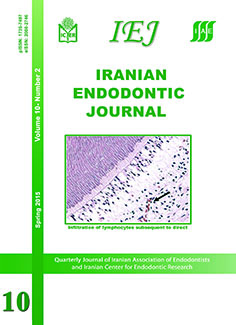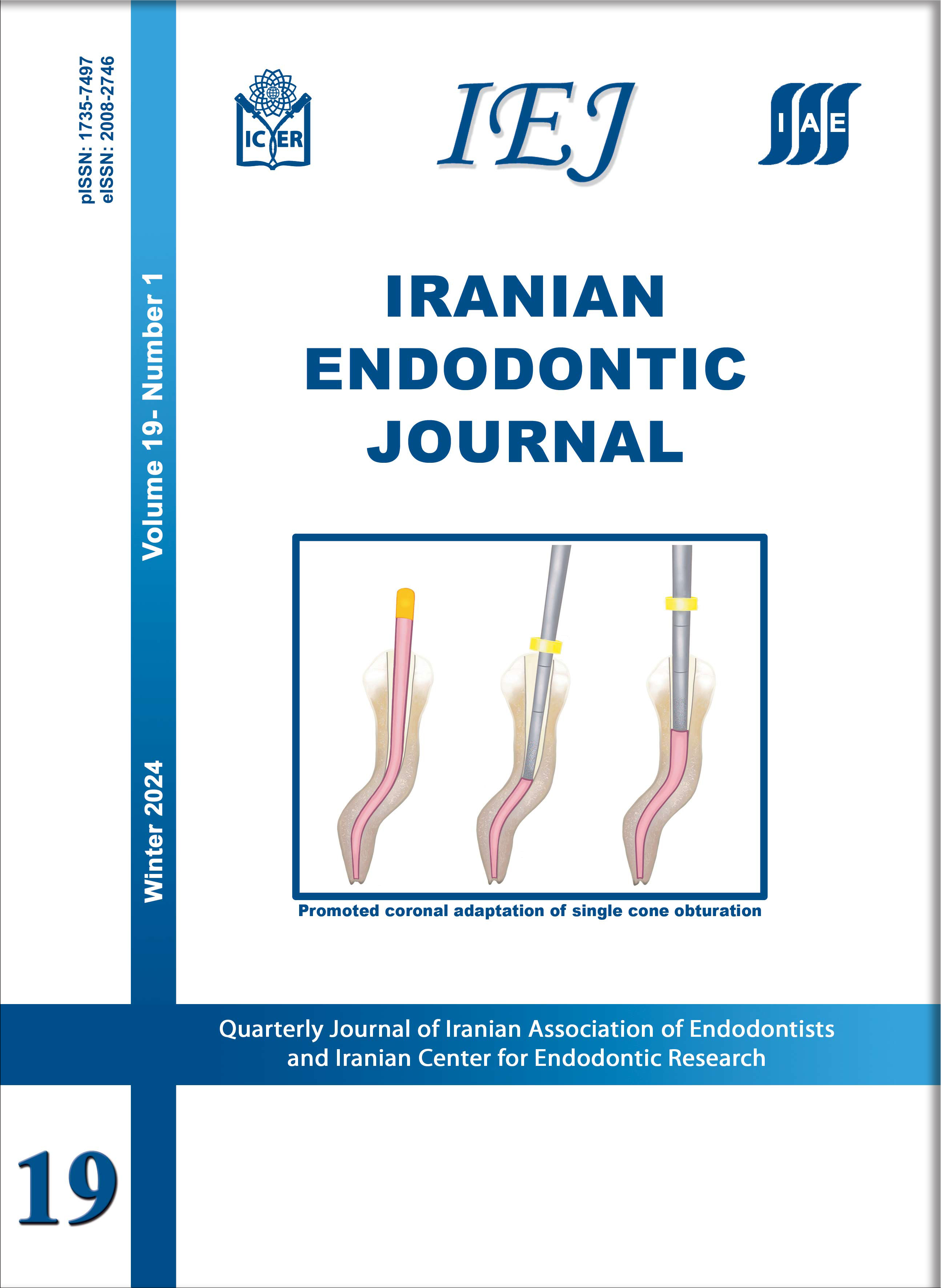Histological Evaluation of Single and Double-visit Direct Pulp Capping with Different Materials on Sound Human Premolars: A Randomized Controlled Clinical Trial
Iranian Endodontic Journal,
Vol. 10 No. 2 (2015),
1 Esfand 2015,
Page 82-88
https://doi.org/10.22037/iej.v10i2.6841
Introduction: The aim of this study was to evaluate the clinical and histological status of the pulp in sound human premolars after direct pulp capping (DPC) with four different DPC methods/materials. Methods and Materials: This study was conducted on eight volunteers who had to extract four first premolars due to orthodontic treatment. Subsequent to tooth isolation, standardized class I occlusal cavities were prepared and the buccal pulp horns were exposed. Then four different protocols of DPC were applied randomly: group A (control); calcium hydroxide lining paste (Dycal), group B; ProRoot MTA (standard double-visit method), group C; ProRoot MTA (single-visit method) and group D; calcium hydroxide injectable paste (Multi-Cal). The cavities were then restored and the patients were put on a six-week clinical follow-up and by the end of this period the teeth were extracted for histological evaluation. Data were analyzed with the Kruskal Wallis test and the level of significance was set at 0.05. Results: In terms of clinical symptoms and formation of hard tissue bridge (HTB), no significant differences were found between groups A, B and C (P>0.05); however, group D’s results were significantly different as they exhibited minimal HTB formation and excessive sensitivity (P<0.05). Inflammation was significantly lower in group B (P>0.05). Conclusion: Application of MTA during a single-visit protocol of DPC was clinically and histologically as successful as the standard double-visit method but the routine use of Multi-Cal as pulp capping material is questionable and should be reconsidered.




